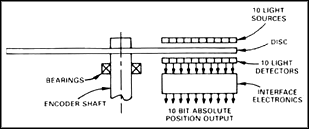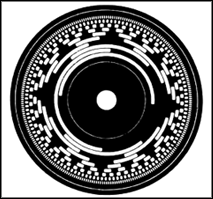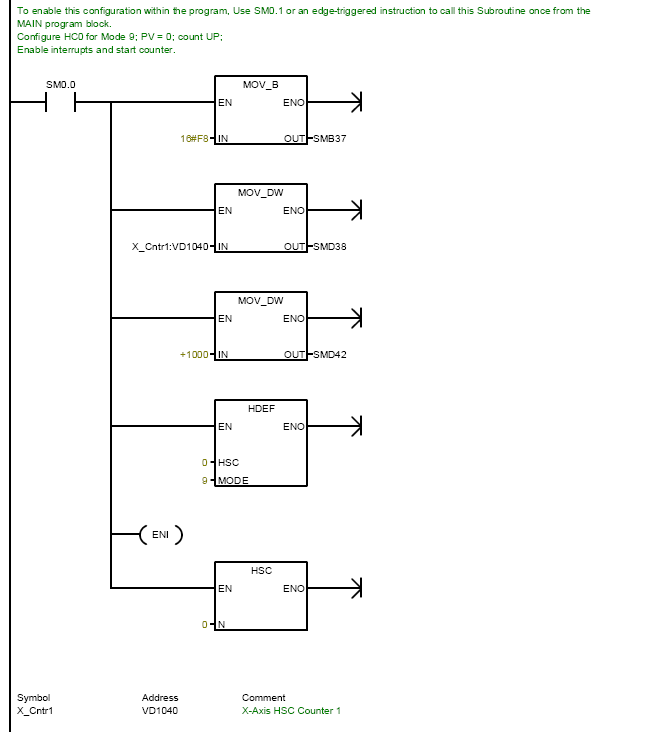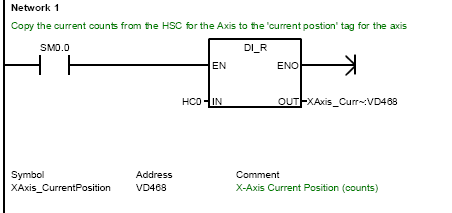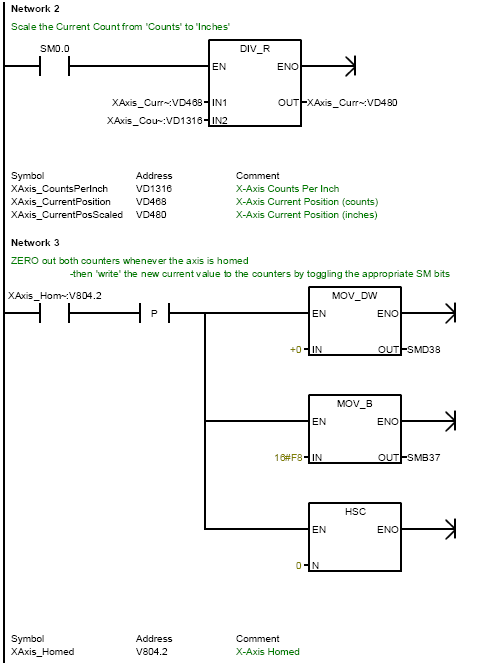The absolute encoder is designed to correct this problem. It is designed in such a way that the machine will always know its location. Figure 10-112 shows an example of an absolute encoder. From this figure you can see that this type of encoder has alternating opaque and transparent segments like the incremental encoder, but the absolute encoder uses multiple groups of segments that form concentric circles on the encoder wheel like a "bull's eye" on a target or dartboard. The concentric circles start in the middle of the encoder wheel and as the rings go out toward the outside of the ring they each have double the number of segments than the previous inner ring. The first ring, which is the innermost ring, has one transparent and one opaque segment. The second ring out from the middle has two transparent and two opaque segments, and the third ring has four of each segment. If the encoder has 10 rings, its outermost ring will have 512 segments, and if it has 16 rings it will have 32,767 segments.
Since each ring of the absolute encoder has double the number of segments of the prior ring, the values form numbers for a binary counting system. In this type of encoder there will be a light source and receiver for every ring on the encoder wheel. This means that the encoder with 10 rings has 10 sets of light sources and receivers, and the encoder with 16 rings has 16 light sources and receivers.
The advantage of the absolute encoder is that it can be geared down so that the encoder wheel makes one revolution during the full length of machine travel. If the length of machine travel is 10 inches and its encoder has 16-bit resolution, the resolution of the machine will be 10/65,536, which is 0.00015 inch. If the travel for the machine is longer, such as 6 feet, a
coarse resolver can keep track of each foot of travel, and a second resolver called the
fine resolver can keep track of the position within 1 foot. This means the coarse encoder can be geared so that it makes one revolution over the entire 6-foot distance, while the fine encoder is geared so that its entire resolution is spread across 1 foot (12 inches).
Absolute Optical Encoder Internal Construction
FIGURE 10-112 Example of an absolute encoder wheel that shows the pattern of concentric circles. This diagram also shows the location of 16 light sources and 16 light receivers that decode the pattern of light as it passes through the 16 concentric circle patterns. (Courtesy of Analog Devices.)
Since the absolute encoder produces only one distinct number or
bit pattern for each position within its range, it knows where it is at every point between the two ends of its travel, and it does not need to be homed to the machine each time its power is turned off and on



